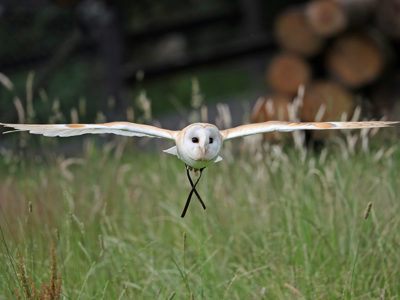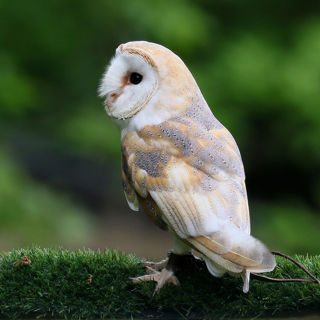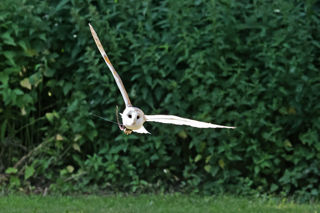
Barn Owl
Tyto alba
Barn Owls are a pale, medium sized owl (29-44cm length), with a wingspan of 68-105cm. They are normally pale brown in colour with dark speckles. They have a white, heart-shaped face and chest.
Behaviour
They are nocturnal, normally becoming active not long after dusk, although they have been known to be daytime hunters in the UK. They're not territorial, but occupy home ranges. Female home ranges coincide with those of the males, although they roost separately outside of the breeding season. They roost in holes in trees, cliffs and buildings.
UK Status
The Barn Owl is resident throughout the UK all year round; they are only absent from the most northerly regions and upland areas due to winter weather conditions. Having suffered population declines until the 1970s, numbers seem to have recovered. Including their nests, eggs and young, they are fully protected in the UK by the Wildlife and Countryside Act 1981.
Threats
The loss of grassland areas due to intensified agricultural practices, road development and urbanization have been a major cause of decline. During the 1950s, the use of organochloride pesticides and of rodenticides in 1960s had devastating effects on their populations throughout Europe including the UK.

Distribution
Barn Owls occur in every continent except Antarctica, including across Europe, most of Africa, the Americas and many islands.
Habitat
Open countryside and habitat edges are crucial for barn owls, particularly field edges, watercourse edges and woodland grass edges. Rough grassland areas are key hunting grounds for barn owls due to the cover it provides their prey species.
Diet
In the UK, 90% of their prey are rodents; mainly the field vole, followed by common shrews, wood mice and brown rats.
Family facts
Specialised serrated feathers that absorb noise and alter air turbulence enable the barn owl to have near-silent flight.



